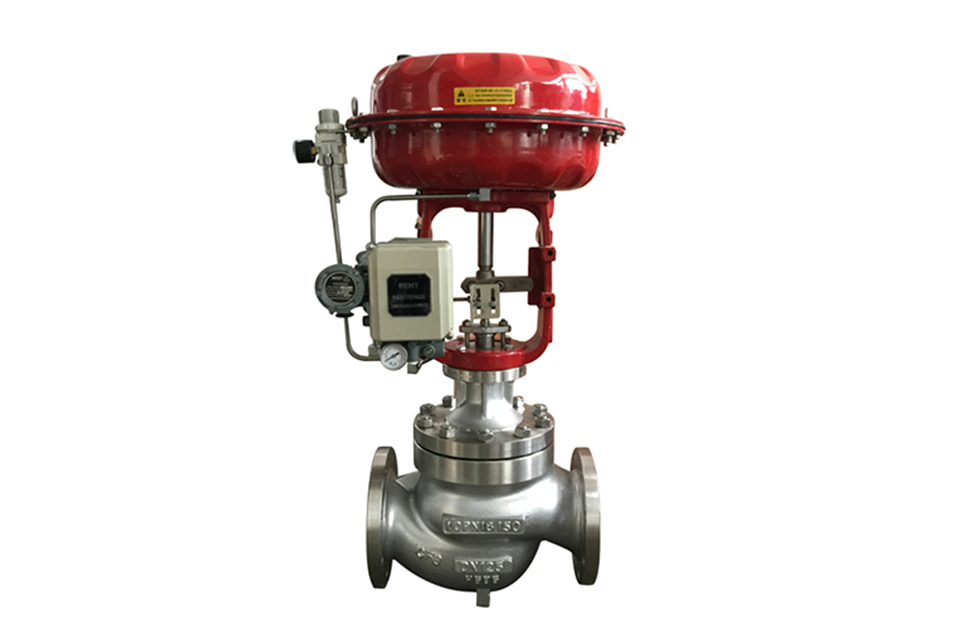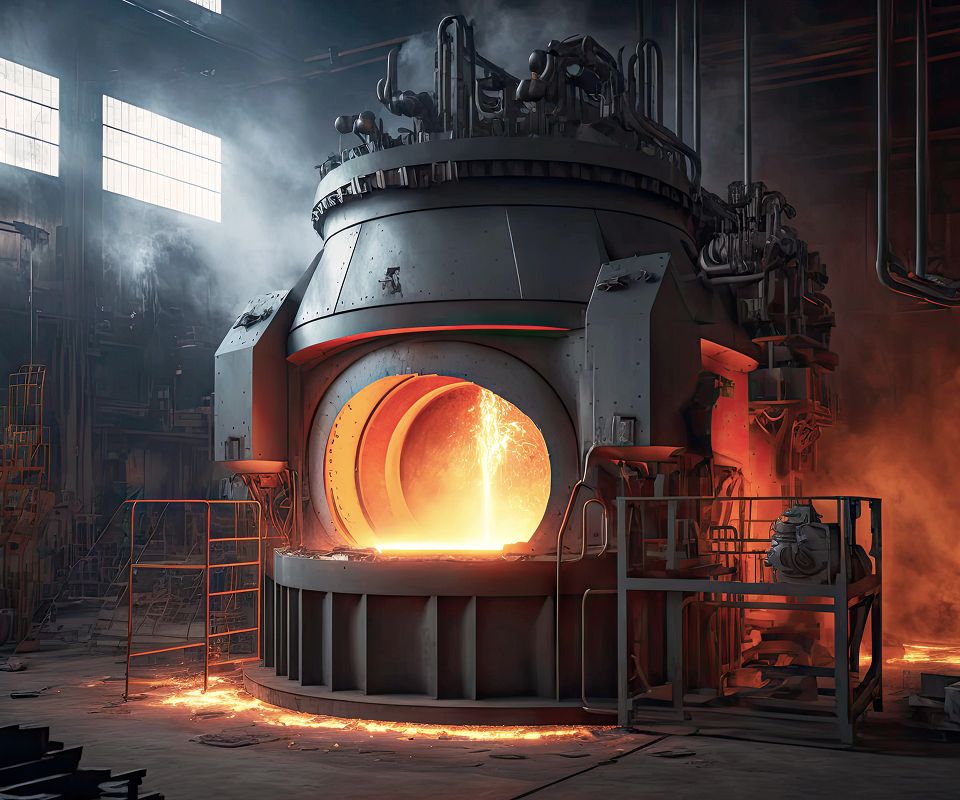It is widely used for precise control of media such as gases and liquids, maintaining process parameters (e.g., pressure, flow, temperature, liquid level) at set values.
This series of products includes various types such as standard type, regulating and shut-off type, bellows seal type, and jacketed insulation type.
The product's nominal pressure ratings are PN10, 16, 40, and 64; the valve body caliber ranges from DN20 to DN200. It is applicable to fluid temperatures in multiple grades within the range of -200℃ to 560℃. The leakage standards are Class IV or Class VI. The flow characteristics are linear or equal percentage. A variety of models and specifications are available for selection.
Product Features:
- Top-guided single-seat control valve with a compact structure, few components, and easy maintenance.
- Metal valve cores are suitable for various working occasions, meeting Class IV leakage standards; ZXPQ type soft-seal structure valve cores meet Class VI leakage standards.
- The valve body is designed as an equal-section, low-flow-resistance flow channel based on fluid mechanics principles, increasing the rated flow coefficient by 30%.
- Large adjustable range with an inherent turndown ratio of 50.
- The actuator adopts a multi-spring structure, with a 30% reduction in height and a 30% reduction in weight.
- ZXPV type bellows seal control valve forms a complete seal for the moving valve stem, preventing fluid leakage.
- ZXPJ type control valve is equipped with an insulation jacket, suitable for occasions where fluids are prone to crystallization or solidification after cooling, which may cause blockage.
Component Materials
- Valve Body & Bonnet: WCB/WCC, ZG230-450, ZG1Cr18Ni9Ti
- Valve Plug & Seat: 1Cr18Ni9Ti, Stellite alloy overlay welding
- Soft-Seal Valve Plug: Reinforced PTFE
- Packing: PTFE, flexible graphite
- Bellows: 1Cr18Ni9Ti
- Gasket: Rubber asbestos sheet, 10 (carbon steel), 1Cr18Ni9Ti, spiral-wound asbestos gasket
- Diaphragm Cover: A3 (carbon steel)
- Corrugated Diaphragm: Nitrile rubber with reinforced polyester fabric
- Spring: 60SiMn
- Valve Stem & Push Rod: 2Cr13, 1Cr18Ni9Ti
- Bushing: 2Cr13
Actuator
- Type: Multi-spring diaphragm actuator (P280B/K, ZP400B/K, ZP600B/K, ZP1000B/K)
- Valve Action: Direct-acting, reverse-acting
- Diaphragm Material: Nitrile rubber with reinforced polyester fabric
- Spring Range: 20~100KPa, 40~200KPa, 80~240KPa
- Supply Pressure: 0.14~0.4MPa
- Signal Interface: Internal thread M16×1.5 (M10×1)
- Ambient Temperature: -30℃~+70℃
(1) Before installation, check that the product model, tag number, and specifications match the requirements. Inspect the entire valve for missing or loose parts.
(2) Prior to installation, clean the pipeline. Ensure there is sufficient straight pipe section at the valve inlet and install a filter. When connecting the valve body to the pipeline flanges, ensure coaxiality.
(3) Thoroughly clean the pipeline before installing the valve.
(4) The installation site should ensure the safety of personnel and equipment, facilitating operation, disassembly, and maintenance.
(5) The valve should be installed vertically upright on horizontal pipelines. If necessary, it can be installed at an angle, but horizontal installation should be avoided. For occasions with heavy valve weight or vibration, use a support frame.
(6) The medium flow direction must align with the arrow on the valve body. The air supply should be dry and oil-free. The valve should be used in environments with temperatures ranging from -20℃ to 55℃.
(1) Cleaning the Valve: For general media, cleaning with water is sufficient. For media harmful to health, first understand their properties and then select an appropriate cleaning method.
(2) Disassembly: Remove rust from exposed rusted parts first. Before derusting, protect the machined surfaces of precision parts such as the valve seat, valve plug, valve stem, and push rod. Use special tools when disassembling the valve seat.
(3) Valve Seat: Minor rust or wear on the sealing surface can be repaired by machining. If damage is severe, replace the seat. However, both repaired and replaced hard sealing surfaces must be lapped.
(4) Valve Stem: If the surface is damaged, it must be replaced.
(5) Damage to Push Rod, Guide, and Sealing Surfaces: Reverse-acting actuators must be replaced; direct-acting actuators can be reused after proper repair.
(6) Compression Spring: If there are cracks or other defects affecting strength, replace it immediately.
(7) Wear Parts: Packing, gaskets, and O-rings must be replaced entirely during each maintenance. Check the valve plug and diaphragm for cracks, aging, or corrosion that may cause future failures. Decide whether to replace them based on inspection results, but the diaphragm service life should not exceed 2-3 years.
(8) When reassembling the valve, ensure alignment. Tighten bolts diagonally and lubricate sliding parts. After reassembly, debug the valve according to the factory test items and methods. During this period, accurately adjust the packing compression force and the valve plug closing position.
-
If the model has not been selected before ordering, please provide us with the operating parameters:
(1) Nominal diameter DN (mm);
(2) Nominal pressure (MPa or bar);
(3) Fluid properties (including medium temperature, viscosity, or acidity/alkalinity);
(4) Pressure before and after the valve (pressure differential);
(5) Requirements for flow characteristics;
(6) Materials of valve body and valve core;
(7) Connection type;
(8) Driving method (provide air supply pressure, driving voltage);
(9) Supporting accessories (for pneumatic valves, it is recommended that users install an air filter triplet and a 2-position 5-way solenoid valve);
(10) On-site working conditions. -
If the product model of our company has been selected by the design unit, please order directly from our production department according to the model;
-
When the application occasion is very important or the pipeline is relatively complex, please provide the design drawings and detailed parameters as much as possible, and our experts will review and check them for you.














